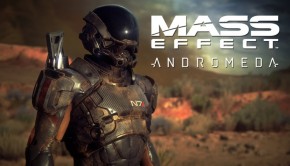Mirror’s Edge Catalyst Original Soundtrack
 |
Album Title: Mirror’s Edge Catalyst |
| Record Label: Electronic Arts Recordings, Inc. |
|
| Catalog No.: N/A |
|
| Release Date: July 22, 2016 |
|
| Purchase: Purchase on iTunes |
Overview
As Solar Fields, Swedish composer Magnus Birgersson returns to the franchise that introduced millions of players to his characteristic blend of ambient, downtempo, and trance textures. Mirror’s Edge Catalyst, his 16th album, was recorded over two years at DICE’s Stockholm headquarters. The result is an astonishing five hours of music that captures the anxiety of life in the city of Glass, an autocratic society of impossible cleanliness, like an Apple Store writ large. Birgersson conjures narcotic waves of gently lapping sound, the themes of a soma-fed citizenry, and then troubles those waters to suggest the fear of stepping out of line. These disparate halves are bridged by propulsive beats that insist – don’t stop, go straight, move forward. As Faith Connors, a skilled courier and black marketeer, that is exactly what players will do in order to survive.
Body
Mirror’s Edge Catalyst is set in a near future of inverted totalitarianism, a term coined by political theorist Sheldon Wolin to describe a government of corporations, by corporations, for corporations. The Conglomerate, as the game’s oligarchy is known, wields power so great that it can afford to eschew euphemism. Citizens are known as Employs, the game’s antagonist lives in Elysium, and the masses live on the Grid – think China’s Great Firewall on steroids – where every communication is tracked and monitored. Surveillance is total, liberty not so much.
Consequently, Birgersson’s score provides moments of shimmering radiance – the clean, clear tones of lives made easy and efficient by technological convenience – interrupted by knives of buzzing static and processed guitar that represent those who lose the Conglomerate’s favor or else refuse it. This tension often manifests within the same track. Cuts like “The Shard,” “Savant,” and “Back in the Game” are miniature suites that convey a sense of narrative. The latter begins in New Age optimism: amelodic tendrils of industrial sound straining toward the cosmos. Then beats emerge, providing a trip hop-like structure that, by minute eight, abruptly veers into a churning staccato of angry guitar that recalls Fragile-era Nine Inch Nails. A mood of imminent danger, but one that lasts barely a minute before the track detours again, this time into meditative trance. Half of the score’s 32 tracks are similarly structured, including the scene-setting “Flytrap” and “Vive Le Resistance.”
The rest of Catalyst is largely devoted to character themes, such as “Plastic,” “Dogen,” and “Aurore,” which hew to a conventional runtime of two or three minutes. “Faith” opens with an ambient throb from which cold sustained notes give rise to anxious swells of sound. The track is one of form struggling to emerge from the void, fitting for a protagonist reluctantly drawn into a struggle for liberation. “Noah” summons gentle waves of sound that rise and fall but never go anywhere in particular, while “Kruger”’s glassy, undisturbed surface suggests the Conglomerate patriarch’s supreme confidence, one belied by a yawning chasm of dissonance that opens, however briefly, as the track nears its conclusion.
In a Reddit AMA, Birgersson described his approach to composition. “I like to be completely blank in my head when I compose and just listen to what I create, and when I start to feel what I am doing I get into what I call ‘the zone’ and the outer world disappears and I am one with the music.” This ‘zone’ is surely a flow state, the same absorption experienced by players who keep Faith Connors fleet of foot and mobile. Perhaps this is what Magnus Walterstad, DICE audio director, meant when he said, “Magnus has the soul of the game in his music already.” Much of Catalyst’s music begins in a state of dreamy formlessness (e.g. “Release,” “Gridnodes,” “Anchor District”) before rhythm and instrumentation arrive to provide structure and forward momentum, presumably at the moment when Birgersson begins to feel what he’s doing.
But as with all dreams, listeners may struggle to remember what they’ve heard and experienced over the course of Catalyst’s five hours. With the help of Kyma, a sound design workstation, Birgersson wrings manifold sounds and shapes from an array of keyboards and synthesizers. Yet his tracks blur into one another. In the liner notes of his seminal Music for Airports, Brian Eno wrote that ambient music “must be as ignorable as it is interesting.” Catalyst is not Music for Airports, but in its unedited abundance it will challenge the attention of all but the most devoted Solar Fields fans, and even they may find themselves occasionally ignoring this interesting music. This in itself is no great problem, especially for those who crave a wave of sound on which to float away for whatever reason, or for those who would never think to use ‘background noise’ as a pejorative when describing their favorite music. Nevertheless, I found many of these tracks running together, and even after repeated listens I struggled to differentiate one piece from another. The effect was to make the album unmemorable except as a whole piece. “Savant” may be Birgersson’s favorite track, but I’m not sure I could tell one from another without additional study.
Summary
Even so, it’s hard to imagine a soundtrack more suited to its game. In genre, variety, tone, and texture, this is indeed the experience of Mirror’s Edge in audio form. And if, like the game it accompanies, the score is sometimes frustrating, it’s also host to moments of excitement, ingenuity, and ethereal beauty.
Do you agree with the review and score? Let us know in the comments below!
3.5
Posted on February 23, 2017 by Michael Hughes. Last modified on January 19, 2018.














